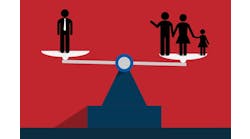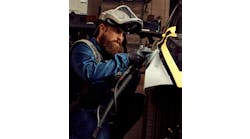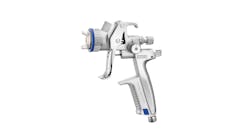When it comes to being the compliance manager at LaMettry’s Collision, an eight-shop MSO in the Minneapolis area, Cheryl Magers says she pretty much does it all.
“I’m kind of like the central processing center,” says Magers. “Whatever you need, let me know, and I'll see if I can help.”
An art major in college, Magers went on to open her own auto shop in 1986 with her husband. After eight years, Magers says she found herself running the shop alone and overwhelmed by all the work. She left for LaMettry’s in 2001, and hasn’t looked back.
In her role as compliance manager—which she says is a rare position in the collision repair industry—Magers is the main liaison between insurance companies, estimators and the shop. She organizes communication with over 40 DRPs, 44 estimators and the technicians on the floor to properly document and assess every car that comes through the door.
Magers details how her creative side aids in her job as a compliance manager, how she schedules her numerous interactions throughout the day and why she has such a strong relationship with insurance companies.
I was an art major. But you know what? It's really funny, because even though I was an art major, there are a lot of similarities to my job now in the craft. The sculpture, the color, the chemistry—all of that stuff. Back in high school when you take those aptitude tests that say what you’re good at and what you should be, mine came back that I should be a mechanic, which I thought was so ridiculous. But apparently it was pretty spot on.
I understand the mechanics of things. With art, I was mostly into the three-dimensional stuff. I worked in a stained glass studio for years. I like sculpting. You have to understand the chemistry of what you're working on, whether it be metal, marble, glass, silver or wax. Most artists get bored pretty easily, and being in the collision industry—whether you're an estimator or a parts manager or just a receptionist at the front door—no day is ever the same. No collision is ever the same.
It's actually been really fun to keep up with it and just learn all the new technology and share it. That's basically what my job is: getting the knowledge and sharing it, putting it out there for the managers and our general manager so everyone knows the right way to do things.
It’s not a common position in this industry, but it’s worth investing in if your company is large enough. Handling 40 different insurance companies through one person does seem daunting, but it works for us. We have eight locations, so every time an insurance company logs an estimate, it comes to me. All of these estimates are organized in CCC ONE, which I spend my day cycling through and communicating back with the DRPs. In my company, it’s one central person everyone can go through, from insurance companies to shop managers to technicians.
We have general managers at each of our eight locations. My position was an effort to standardize all of our estimates so everyone was on the same page. If an estimate was transferred from one shop to another, it would be written in the same format, have the same basic charges, the same everything—so they could just take that and go.
To start my day, the first thing I do is log in to CCC ONE and usually there's some power estimates waiting for me to look over. I check for compliance before I go ahead and push the button to upload to the insurance companies. As I go through each estimate step by step, I'll check several things:
- The facts of loss
- The signed direction of pay in the file attachment
- The line notes
- The VIN matches with the documentation
- The VIN is decoded correctly
- The impact points and whether or not it’s drivable
- The photos taken by estimators
Basically, it’s compliance for the insurance companies. We have our photo SOPs, which detail over a dozen points of the car and whatever the damage is. That’s an important step, because sometimes insurance companies want less or more photos than you.
While checking those photos, I am already working on an estimate in my mind. Then I go back to the estimate and start going through it line by line, checking it for leftover items that may have been missed, making sure it's not a total loss, and running an advisor report through CCC ONE. Insurance companies have their own scoring system in there and the report allows us to stay compliant with them. I make sure the recycled parts searches were run and that all parts on the estimate have been checked for alternative parts availability.
I make sure that all the parts that are written to be installed with OEM parts are installed with the OEM recommendations. So for any welded-on parts, I make sure that all data has been run and that we're doing everything correctly. Right down to how many welds, how big they should be, what kind of welding wire—all that stuff. I make sure that any judgment labor hours have line notes that depict the repair process and explain why that amount of labor is needed. I check that any invoices or direction-of-pay bills are in the file. And that's pretty much the beginning of the day.
When I first started texting, it was all in capital letters because I didn’t know how to use my phone, and my kid kept asking, “Mom, are you mad at me? Why do you keep texting in caps?” It's the same thing with the insurance companies. It's all in how you talk about stuff, what kind of knowledge you can impart to them or what you can take from them. It’s a give-and-take, and it's actually a pretty fun job. It's nice working with the insurance companies and different DRP coordinators and all of our estimators.
With my job, there’s always something to be attended to. I’m always answering questions for the insurance companies, estimators coming in or our technicians. It’s mainly just general day-to-day items that you run into at a collision repair shop. “Hey, can you take a look at this? How would you write this estimate?” And I’ll need all the data and the structural repair information. I will try to help everyone get that information as well. I am very busy. But I'm not bored. I'm never bored.
But I can’t do it alone. I've got a gentleman who handles all of our total losses, so we set up and coordinate where he's going to be for all of our eight locations. My estimators will say, “Hey, I think I have a possible total loss here,” and I’ll send him out to take a look at it.
He worked at an insurance company previous to working with LaMettry's, so it's been a real boon to have him handle the total losses, which can take two or three hours. It allows my managers to go ahead and keep doing what they're doing so we can continue processing claims and getting vehicles in and out of the door quickly for our customers.
To be the best I can be at my job, it’s really important that I don't draw a line in the sand and say, “You're the insurance company, I'm a body shop.” Yes, I understand we're at opposite ends of the money spectrum, but we still have a job to do. The more we can work together and solve our problems, the better that will be for everybody: the body shops, the customer and also the insurance company.



